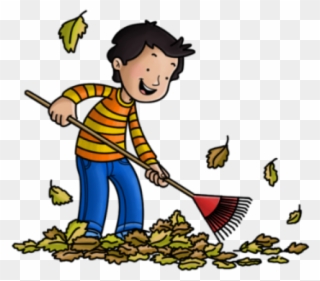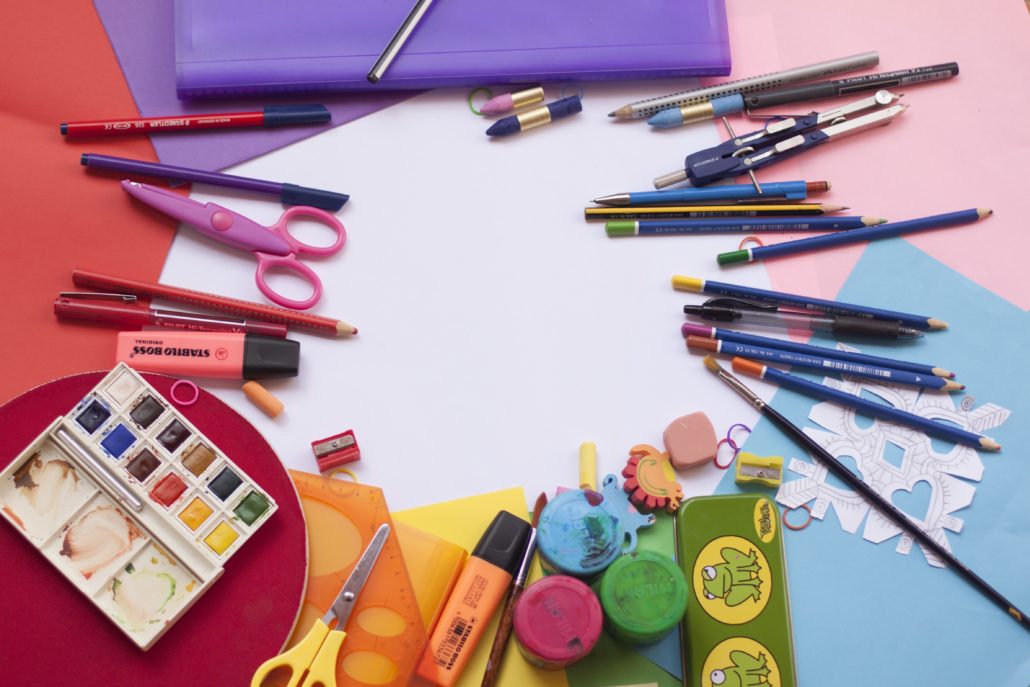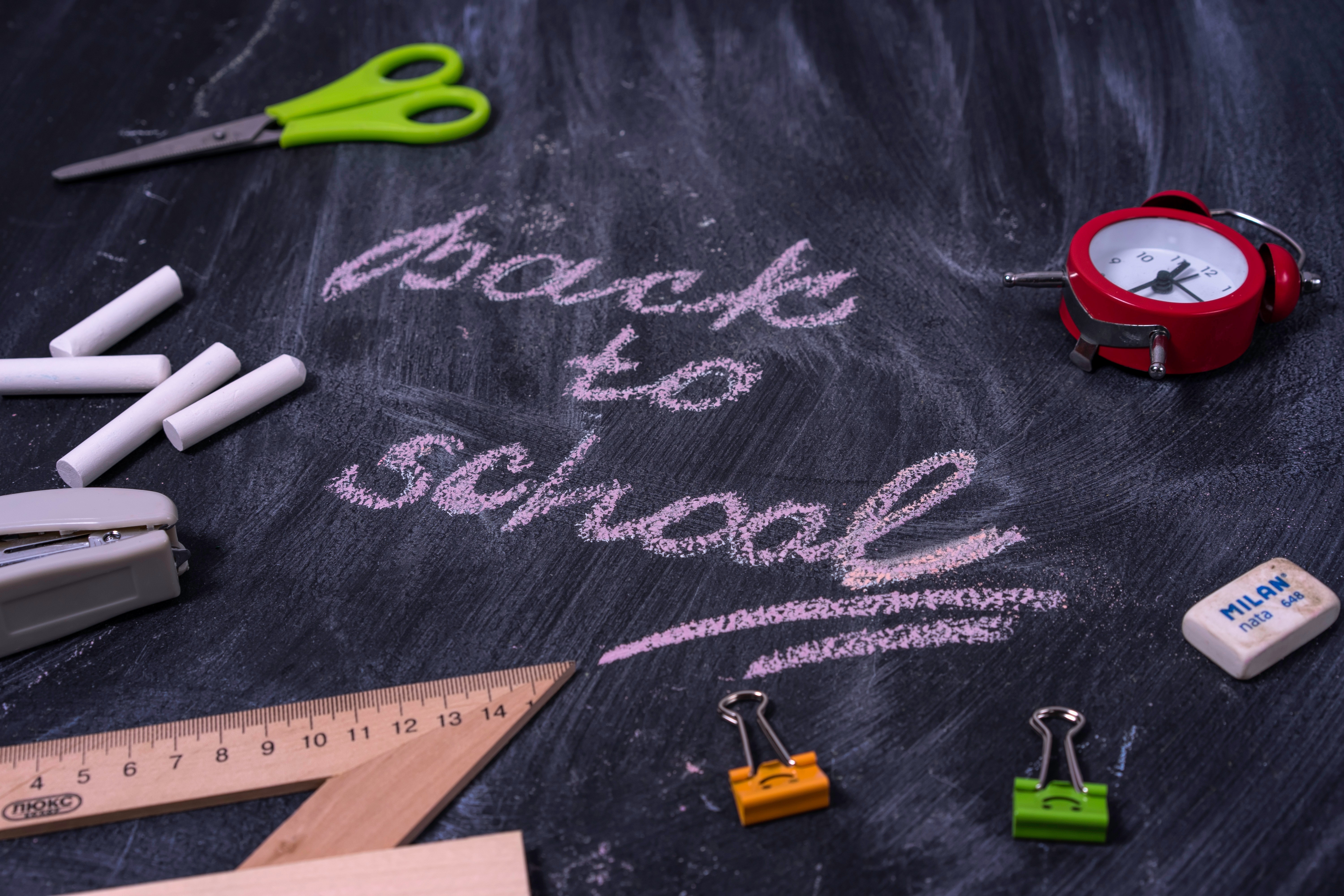

- Call 908 543 4390
- Email
- Dr.Joni Redlich PT,DPT


By Dr Ali and Dr Kat
Hey families! Are you looking for fun, outdoor activities in the changing weather that will challenge your kiddo’s motor system? Well look no further, because we have the most fun, festive, fall activities RIGHT HERE!
 Rake the leaves: Help mom and dad out by grabbing a rake and raking all the leaves into one pile. Using a rake is a great gross motor activity because you have to use two hands together while turning your upper body to rake successfully (aka you have to use your core muscles). You need to do this while holding your lower body stable, working on balance while working on your kiddo’s core at the same time!
Rake the leaves: Help mom and dad out by grabbing a rake and raking all the leaves into one pile. Using a rake is a great gross motor activity because you have to use two hands together while turning your upper body to rake successfully (aka you have to use your core muscles). You need to do this while holding your lower body stable, working on balance while working on your kiddo’s core at the same time!
 Jumping in the leaves: Leaf jumping is so much fun! Make sure that there is a big pile to jump in first, then run and JUMP into the leaves. You can try all kinds of jumps here: a traditional jump which includes a two footed take off and two footed landing, a leap where you start on one foot and land on the other foot, or a hop where you start on one foot and land on the same foot! There are so many possibilities.
Jumping in the leaves: Leaf jumping is so much fun! Make sure that there is a big pile to jump in first, then run and JUMP into the leaves. You can try all kinds of jumps here: a traditional jump which includes a two footed take off and two footed landing, a leap where you start on one foot and land on the other foot, or a hop where you start on one foot and land on the same foot! There are so many possibilities.
 The Squirrel Hop: Squat down low to the ground with your hands on the ground too (kind of like a frog). Now jump your hands forward and then jump your feet to your hands to hop like a squirrel (think like a frog jump!). Do this jump all over the house and make it even more fun by adding acorns to the mix and hide your acorns all around the house (but don’t forget where they are!)
The Squirrel Hop: Squat down low to the ground with your hands on the ground too (kind of like a frog). Now jump your hands forward and then jump your feet to your hands to hop like a squirrel (think like a frog jump!). Do this jump all over the house and make it even more fun by adding acorns to the mix and hide your acorns all around the house (but don’t forget where they are!)
 Nature walk: Enjoy a family outing with a walk at a nature trail or local park. Encourage curiosity about wildlife and the plants you come in contact with by using nature bracelets. Simply wrap duct tape loosely around your child’s wrist with the sticky side facing out. When they find a leaf, flower, or small item that they are interested in, they can pick it up and stick it to their bracelet. (Make sure to educate your kiddos to stay away from poison ivy though.) By the end of the walk, let everyone showcase their bracelets.
Nature walk: Enjoy a family outing with a walk at a nature trail or local park. Encourage curiosity about wildlife and the plants you come in contact with by using nature bracelets. Simply wrap duct tape loosely around your child’s wrist with the sticky side facing out. When they find a leaf, flower, or small item that they are interested in, they can pick it up and stick it to their bracelet. (Make sure to educate your kiddos to stay away from poison ivy though.) By the end of the walk, let everyone showcase their bracelets.
 Apple Tree Balance Act: Draw the outline of a tree with chalk on your driveway or sidewalk and scatter “apples” on each branch that they have to gather. For apples, you can use real/ toy apples, pom poms, bean bags, leaves, small balls, or anything you find nearby. Have your child keep their feet on the chalk lines as if they are walking on a tightrope and keep both feet on the chalk as they squat to pick up the “apples.” Increase the challenge by having them do it backwards/ sideways, touching elbow/ hand to opposite knee with each step, or incorporating “apples” of varied colors that they need to sort into different baskets.
Apple Tree Balance Act: Draw the outline of a tree with chalk on your driveway or sidewalk and scatter “apples” on each branch that they have to gather. For apples, you can use real/ toy apples, pom poms, bean bags, leaves, small balls, or anything you find nearby. Have your child keep their feet on the chalk lines as if they are walking on a tightrope and keep both feet on the chalk as they squat to pick up the “apples.” Increase the challenge by having them do it backwards/ sideways, touching elbow/ hand to opposite knee with each step, or incorporating “apples” of varied colors that they need to sort into different baskets.
Do you have any other fall fun activities to share? Post them in the comments!
Why shouldn’t health literacy start early? Here at KidPT our biggest goal is to empower our families and kiddos to be independent in order to achieve their best lives. Health literacy is one of the building blocks necessary to achieve independence. By having kids understand their body: how it works, how it communicates to them, and how to manage their basic health needs; they will be prepared to be advocates for their health. Ideally, we want our kids to learn how to
live lives in which they prioritize their wellness and have the competence to make smart and informed health decisions in the future. We know from research that we learn best when activities are fun and engaging as our brains are more active. One easy way to start introducing learning about the human body is through story time. Welcome to our health literacy book corner. Below is a list of books for kids of various academic levels that are fun resources that give basic understanding of how our bodies work.
Listening to My Body by Gabi Garcia.
The first line of this book is “My body is my friend.” This sets the stage for the book’s goal to develop a relationship with your body. We meet a boy who teaches the reader how to listen to body sensations and emotions. He also provides strategies on how to manage these sensations and feelings to promote success with everyday activities.
Look inside your body by Louie Stowell
This is an interactive book as it is filled with flaps so that you can see inside the body and look at the different organs and parts. It provides various facts on how the organs work and what they do to all interact together to allow us to function as humans.
Give me back my bones by Kim Norman
This book introduces the reader to the names of the different bones of the body with a story of a skeleton whose bones got scattered through the ocean. It is appropriate for most ages as it includes fun rhymes and pictures.
100 Things to know about the human body by Alex Frith, et al.
This book is sure to feed a love for learning as it provides countless and in depth fun facts related to the human body with stimulating visuals. This is a perfect
book for our curious kiddos who love facts.
Shine-a-light: The human body by Carron Brown and Rachael Saunders
You and your child become explorers of the human body with this book. It is exciting because the reader uncovers hidden features under the skin of the
characters in the book. Shining a light behind the page reveals the bones, nerves, lungs, heart, vascular system, a baby in the womb, and so much more.
You and your little ones will enjoy discovering what is under the skin and how each organ helps us to function.
This series of books provides a great introduction to learning about the heart, brain, and the various parts of the cell. It is interactive to promote learning and
understanding. The neurology book is our favorite.
The Fantastic Body: What Makes You Tick & How You Get Sick by Howard Bennett
This is a funny and engaging reference book on everything related to the body. It provides in depth and easy to understand visuals to promote learning and
interest.
Cutie Sue Fights the Germs
Cutie Sue and her brother are sick. She will share with you what she learns about personal hygiene, how to handle doctor visits, and strategies to boost the
immune system and fight being sick. This is a great story to promote wellness and taking care of your body.
We hope you found some fun and interesting books in this list that you can read together with your children. Do you have any favorites to share with us? Comment below!

Halloween is here and it’s the second year we are taking extra precautions because of COVID. It can be overwhelming for parents especially since there are a whole new set of provisions to take to get our kiddos ready for trick or treating. This
past year, we have had the opportunity to receive the COVID vaccine therefore the restrictions this year have been looser. But, it is still important to take the necessary steps to make this Halloween safe for everyone. We would like to share some tips and tricks to keep our community safe while also having fun.
And remember, come trick-or-treating and play some games at KidPT on Halloween for some fun!!!

It can be spooky when it is hard to understand information about your kiddo’s health. October is national health literacy month which advocates for individuals to have the knowledge and access to the information to make informed decisions regarding their health. We believe that knowledge is power, especially when it comes to health. Here are some tips to help optimize your health literacy so that you can make informed health decisions for you and your little ones.
Ask Questions
Always ask clarifying questions to the health professionals that provide care for you and your family. There is no such thing as a “wrong” question, especially if it equips you with knowledge that helps you better understand your health and treatment options. Health care providers have a responsibility to provide education in a way that patients of all backgrounds, cultures, and education levels can understand. If you are more of a visual learner, don’t hesitate to ask for a visual aide that communicates the information.
Do Your Research
It can be intimidating finding reliable information online nowadays. Remember you do not need to do it alone. You can ask your doctor where to start. Good resources usually include sites that end with .gov and most diagnoses have a national association that provides education, research, and local resources. Just remember information you find on the internet can be inaccurate, so discuss the findings of your research with your health care providers so that they can help to weed out what is not helpful.
Community Resources
Often the city or township that you live in will have resources to promote health education. Check out your local library as they not only provide books, but also free access to online databases so that you can search research articles. Often librarians are eager to share their understanding of research and point you in the right direction to helpful resources. Your library is also a great place to start because they can connect you with local agencies and organizations that provide support for your specific concerns or area of interest.
Join Support Groups
Advice from people who have lived in your shoes is priceless. It is impossible to truly understand a situation/ circumstance until you have lived it yourself. Support groups are important as they provide practical advice and tools from people who have experience, affirm that you are not alone, and foster a community that provides support and encouragement to the members. A herd is always more powerful than a lone ranger.
Don’t Panic
Although the process can be frightening and at times overwhelming, it’s important to remember that you are not alone. The full responsibility to diagnose and meet the health needs of your child is not on you. Although it is good to be informed, don’t put the pressure on yourself to be your child’s health care provider. There is one thing you can do better than anyone else; Love and support your child. In order to do that well you need to take care of yourself. Your emotional stability will be a primary source of strength that they can rely on. Pursue a level of understanding that allows you to follow along in the treatment of your child, advocate for their needs, and breathe.

We know it is only the beginning of October, but EVERYONE is already thinking about Halloween (we know you are)! There are so many fun, spooky, but also wholesome fall themes all around, like pumpkin EVERYTHING, little ghosts, the monster mash, and so so much more. Because this whole month seems to be filled with Halloween goodness, we wanted to bring you our Halloween themed exercises early, so you can practice them ALL MONTH LONG, all the way to October 31st! So let’s get Monster mashing, come on!
The Frankenstein Kick 
Stand with your arms out straight in front of you, and walk forward while kicking your legs straight TEN times. Kick your hands if you can! Now you are doing the Frankenstein Kick!
The Zombie Drag 
Lie on your tummy on the floor. Now drag yourself forward (aka do an army crawl) switching your arms 10 times! You can make this even harder if you pretend you are a Zombie who’s legs went missing and try to just move using your arms (it is so tricky).
The Pumpkin Roll 
Sit on your pelvis, criss cross applesauce. Now hug your knees close to your chest with both arms. Roll toward one knee, forward, and then try to sit back up. If you keep going in the same direction, you will start moving in a circle, so try it 5 times to the right then 5 times to the left. If you can’t do this one it is okay it is very hard. An alternative position is the stable pumpkin: Hug your knees into your chest and hold for 10 seconds!
The Mummy Twirl 
Pretend someone is wrapping you up in a whole roll of toilet paper (or actually use the toilet paper for this one and make it even more fun). Hold your imaginary or real toilet paper in between your arm and your side. Then twirl 10 times to the right to wrap yourself up tight like a mummy. Untwirl yourself by going 10 times to the left so you are not so dizzy (and not left mummified)!
The Flying Ghost 
Okay, we are going for the scare factor on this one, kids. Jump as high as you can into the air, bring your arms up over your head, and say BOO! Repeat this 10 times in a row to be the SCARIEST ghost on the block!
And there you have it, ghouls! Have fun performing these exercises to let your inner monster out and to get in the Halloween spirit! Stay tuned this month for more Halloween themed fun and tips to last you the whole month of October. Have fun moving and grooving, and remember to keep it SPOOKY!

The school year has kicked off and is already off to a great start! Attending school is such a privilege because our kids are allowed to learn new things from both teachers and peers. One important topic for children to learn about in school and at home is neurodiversity. Neurodiversity is a concept which is inclusive toward conditions like Autism, ADHD, Dyslexia, Sensory Processing Disorder, and other diagnoses. The topic of neurodiversity advocates against stigmatization of those who are neurodiverse and helps to prevent the idealization of the brain and body developing in one specific way. Children need to know that the brain and body can develop in many beautiful and different ways, and that not everyone sees and experiences the world in the same way.
Through education, children can learn to acknowledge, understand, and respect the differences in themselves and their peers. Many children face different sensory and motor challenges and every child has their own sensory motor strengths, and this is an essential part of life! Teaching kids about neurodiversity promotes understanding and helps to prevent the othering of neurodiverse populations. It also helps kids acknowledge and advocate for themselves or others if access to resources is difficult. It helps them understand that just because someone acts a little differently, moves a little differently, or talks a little differently than they do, that is okay and that they should be celebrated for who they are!
One GREAT way to help teach your child about neurodiversity at home is to provide access to books that talk about it in a way that makes them think about and understand the topic. So, without further ado, here are six children’s books that discuss various topics under the umbrella of neurodiversity so you and your child can learn and grow together:
This book utilizes 26 alphabet lessons to nurture social and emotional intelligence among children. It teaches them how to better humanity and work towards a better and brighter future. There are many different topics which are about respecting others, celebrating others, and learning about how to be the best person one can be!
This book is about the true story of Jennifer Keelan-Chaffins and her participation in the Capitol Crawl. This book discusses Jennifer’s drive to question America about why public spaces were not accessible to individuals with disabilities. It details HOW her activism helped lead to the formation and passing of the Americans with Disabilities Act (ADA), which has gone on to benefit SO many Americans to this day (although more spaces and events need to continue to improve their accessibility).
This book is written about Dr. Temple Grandin. Temple was diagnosed with autism at a young age, and faced many challenges growing because many had expectations of her that were not true! No one expected her to talk, let alone become one of the most powerful voices in modern science. Using her powerful and unique mind, she started connecting with animals in a special way. Through this connection and her own perseverance, she became an amazing scientist and inventor, creating revolutionary improvements for farms around the globe!
This is a social-emotional comic book that helps children learn to identify and regulate their behavior in response to outside stimuli. Many kids have trouble controlling how they feel inside in response to things going on around them and need a little support emotionally regulating! This is a great book to teach kids how to be aware of this in themselves and others, how to describe their feelings when they begin to feel overwhelmed, and also for educators interested to understand and support the neurodiverse children in their classroom.
This book helps to celebrate neurodiversity. It begins with the idea that neurodiversity is a normal, essential part of human biodiversity. Without Neurodiversity, we wouldn’t have great minds like Picasso, Einstein, or Greta Thunberg! This book encourages everyone to focus on our strengths and to understand that each brain is unique, which is wonderful!
This book follows a group of children as they each build their own hot-air balloons. It features the kids working together and using their own strengths to create beautiful things. It showcases the fact that we are all different and that the world is a better place when we use our differences and our unique skills to create bright, exciting things as a team!

As we are finally back to school, it is important to also acknowledge and address the stress that may accompany a return to the school environment. Any transition to a new setting can be stressful, especially for children with disabilities. The combination of an unfamiliar environment, interactions with peers, classroom expectations, unpredictability, reduced control, change of routine, challenging coursework, facing the unknown, or the impact of disabilities can signal the stress system (aka sympathetic nervous system) in our children’s bodies. This is also known as the fight, flight or freeze system. When faced with fear, uncertainty, a perceived threat, or the anticipation of a stressor our bodies will increase the stress messengers of the body (aka adrenaline and cortisol). This results in changes in breathing, heart rate, blood pressure, posture, concentration, and also systems like digestion. As this is a normal response in the human body, sometimes it can be overactive and can impact a child’s ability to engage with peers and learning activities.
As parents/ educators/ therapists, our desire is that our kids thrive and enjoy learning about our crazy, cool world with confidence and curiosity. A calm, confident, and aroused state is key to this success in the classroom and with peers. Luckily, our body always tries to have a balance (homeostasis) by having its own checks and balance system.
Introducing: the de-stress system (aka parasympathetic nervous system) which counteracts the stress messengers and helps achieve a calm state. Successful strategies of managing stress often include techniques that help stimulate this de-stress system. Such strategies include slow/ controlled breathing, postural alignment, reducing arousing stimulus, adjusting exposure to stressors, calming touch, engagement in a soothing activity, spending time in nature, and consistent exercise.
Below are some practical tips to incorporate these de-stressing strategies into your household routine for your children and the whole family!
Recommendations:
This post is for education purposes only. Please seek medical advice from a licensed health care provider that directly manages your care.
Further reading on stress:

…and what to do if this is a challenge!
Do you know what is more fun than learning new school concepts while sitting at a desk…?
Learning while on the MOVE!
Sometimes combining movement with learning helps kids learn faster if they function better while on the go.
This is especially so if your kiddo is a mover and a shaker and loves being active and on the go. Using movement, a strength of theirs, to teach something new may open up the neurological floodgates in new ways. This can give your child access to different and novel pathways in the brain to reinforce concepts as opposed to taking the same traditional and traveled routes!
Learning with movement is also a change from the norm, and even if your kiddo doesn’t always crave movement, any new way of learning is usually more engaging than the same ol’, same ol’! The brain loves novelty, so let’s take advantage of that to build some new connections!
So let’s stand UP and try these fun learning games with us:
Do these kinds of exercises seem tricky for your child?
All of these exercises practice something called “dual tasking” where your child is required to perform a task with their body (a motor task) and their mind (a cognitive task). These kinds of tasks are great to practice with your child because with practice, they make it easier for the body and the mind to work on things at the same time. These kinds of tasks can be very difficult for some kids, especially if their body is taking a lot of their attention away from the cognitive tasks they are being asked to do (like schoolwork).
When does this happen? This happens when balancing and controlling their body is very hard and the child is diverting focus to keeping their body still and in one place. If you feel like your child is spending a lot of energy and focus just keeping their body still and in one place, they may benefit from physical therapy to improve their balance and overall control of their body. Giving a child this kind of control can improve their lives for the better because their brains are free to think, focus, and remember things from school and beyond!
Here are a few red flags that dual tasking is tricky for your child:
If this sounds like your child, call us at 908-543-4390 to set up a free Discovery Visit with one of our Physical Therapists to see if Physical Therapy would benefit your child!

WHY “Good Posture” is So Important for School!
by Dr. Ali
We are always hearing about “good posture” and how important it is for us. We hear “sit up straight” and “don’t slouch” often, whether you are saying it to your kiddo or you hear another parent or a teacher saying it to another kiddo. What is never partnered with these phrases is WHY this is so important. I wish that as a kid, somebody told me why sitting up tall was so important, because if they had, maybe I would have done it more instead of slouching!
Sitting with supported, aligned posture is SO important for every body, and for all mobility statuses. If you are curious as to WHAT good posture looks like, click HERE to read a blog post all about appropriate postural alignment and for some solutions to help with sitting posture throughout the school or work day.
It’s also important to remember that a “good posture” is also one that you’re not in for too long! We want to empower our kids to listen to and respond to what their bodies need- that may be using a standing desk for periods of the day or sitting on a wedge to support a more traditional aligned upright posture. However, we do want all of our kids to have the flexibility and postural control to sustain an actively aligned posture for periods of time.
SO, without further ado, we are here to tell you all about one of the BIGGEST benefits of sitting with nice, spinal alignment. And what is this benefit you ask? BREATHING! Sitting with your spine in a properly aligned position makes sure that your ribs are in the right places to allow for proper expansion when we breathe in. Sitting with our core activated, with our ribs and spine in a proper alignment ensures that your diaphragm (the big muscle that attaches to your ribs and sits below your lungs) is in the perfect position to contract and relax for breathing. With your ribs and spine in the right position, your lungs have enough room to expand and let in all the air they can. Then your breathing muscles (the diaphragm and more) are in the best position to bring in all that air (aka a win win)! When you sit up TALL, your breathing is not SMALL!
So, WHY is breathing efficiently important for effective learning throughout the school day? Breathing in big, natural breaths gets oxygen into our lungs, which then gets taken all over the body. Our brain needs oxygen to think all the thoughts we need for our school lessons. The heart needs oxygen to keep beating with a strong and healthy rhythm. The arms and legs need oxygen to fuel their muscles to move and groove or patiently raise a hand to answer a question. The stomach and intestines need oxygen from the blood to digest your yummy lunch so you can turn it into energy! Basically, the WHOLE body needs oxygen to keep on keeping on and to continue doing what each part is supposed to do!
The body needs oxygen for SO many things! And not just any amount of oxygen, but the right amount of oxygen. If the lungs fill with too little oxygen, then the body is only working off of what it has, and maybe compensating for the energy it is missing. You may feel tired throughout the day, with lots of yawns and trouble focusing. This is something we definitely want to avoid when our kiddos go back to school! When they go to school for the day, we give them a hearty breakfast in the morning to make sure they have enough energy to last them until lunch time and a hearty lunch to get them through the rest of the day. BUT both of these amazing meals are not going to help them combat the tiredness they will feel if they are not breathing right all day long at school because of poor posture.
Good posture and optimal breathing supports emotional regulation, by increasing access to the parasympathetic nervous system, the opposite of our “fight or flight system.” It impacts a child’s ability to use their eyes, especially for desktop work, but also the ability to move back and forth between looking far at the teacher and looking close at desk work. It also impacts handwriting and other fine motor skills.
Our ability to sustain our posture over a long period of time is not only the result of the chair we are sitting on but also our body’s ability to sustain “good posture” using our muscles and sensory system. Some kids have a hard time with the muscular endurance or strength required for good posture. Others have a hard time sensing where their body is when sitting and thus sit in a very relaxed, forward curved posture. Some kids have a combination of both of these factors (and typically this is the case). If you notice your child sitting with slouched posture at home, you can probably assume they are sitting that way at school. If they are sitting that way at school too, they are not breathing in the most efficient way and may not be getting the proper amount of oxygen throughout the day for peak concentration! If you feel like this is your child, it is not something that can’t be helped and improved with physical therapy! Through physical therapy, your child can learn to support their body with supported posture and build the muscle strength and endurance to hold that posture for much longer stretches of time. If you feel like your child spends a large part of the day slouching when they sit, do not hesitate to call us at KidPT to schedule a free Discovery Visit so that we can screen your child to see if PT is appropriate for them, and if we are a good fit, to help them learn to sit with ease!
 It is almost back to school time! You must have a lot of things on your plate between enjoying the last few glory days of the summer and also preparing for the start of a new school year. So we have made it easy for you with a quick guide of things to consider when purchasing a backpack.
It is almost back to school time! You must have a lot of things on your plate between enjoying the last few glory days of the summer and also preparing for the start of a new school year. So we have made it easy for you with a quick guide of things to consider when purchasing a backpack.
Although the stores are stocked with bookbags with cool colors, designs, and beloved cartoon characters, try to avoid only considering the style and appearance when purchasing a bag for your little ones. Research has shown that heavy and inappropriately fitting backpacks can alter posture and alignment and place stress on the musculoskeletal system leading to neck, shoulder, and back pain or injuries with repeated use. Our bodies are complex and dynamic with many systems working together. When one area or system is stressed or overloaded, the body adapts with compensations in other areas. Unfortunately, repeated use of poorly fitting or heavy backpacks can lead to inappropriate postural alignment compensations and stress down the structural chain of the body. Since bookbags are used by our kiddos for a significant time throughout the school year, it is important to take steps to ensure appropriate use to avoid injury or compensations.
A few key concepts to follow when choosing a book bag are to increase the amount of contact area between the child and bag, minimize and distribute the weight, ensure symmetry, and keep the load as close to the trunk as possible. Below are characteristics to look for and practical tips to assist you on this back to school endeavor.
Optimal backpack characteristics:
Optimal backpack use and tips:
Signs of poor fit and use:
Please do not replace medical advice from your primary care physician, orthopedist, or physical/ occupational therapist with the information presented in this blog post. Always consult your medical team with medical advice.
https://www.choosept.com/resources/detail/backpack-safety
https://cdn.ymaws.com/www.ccapta.org/resource/resmgr/imported/MCBackpackSafety.pdf
